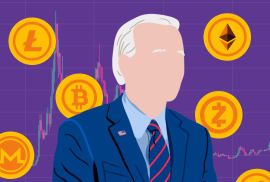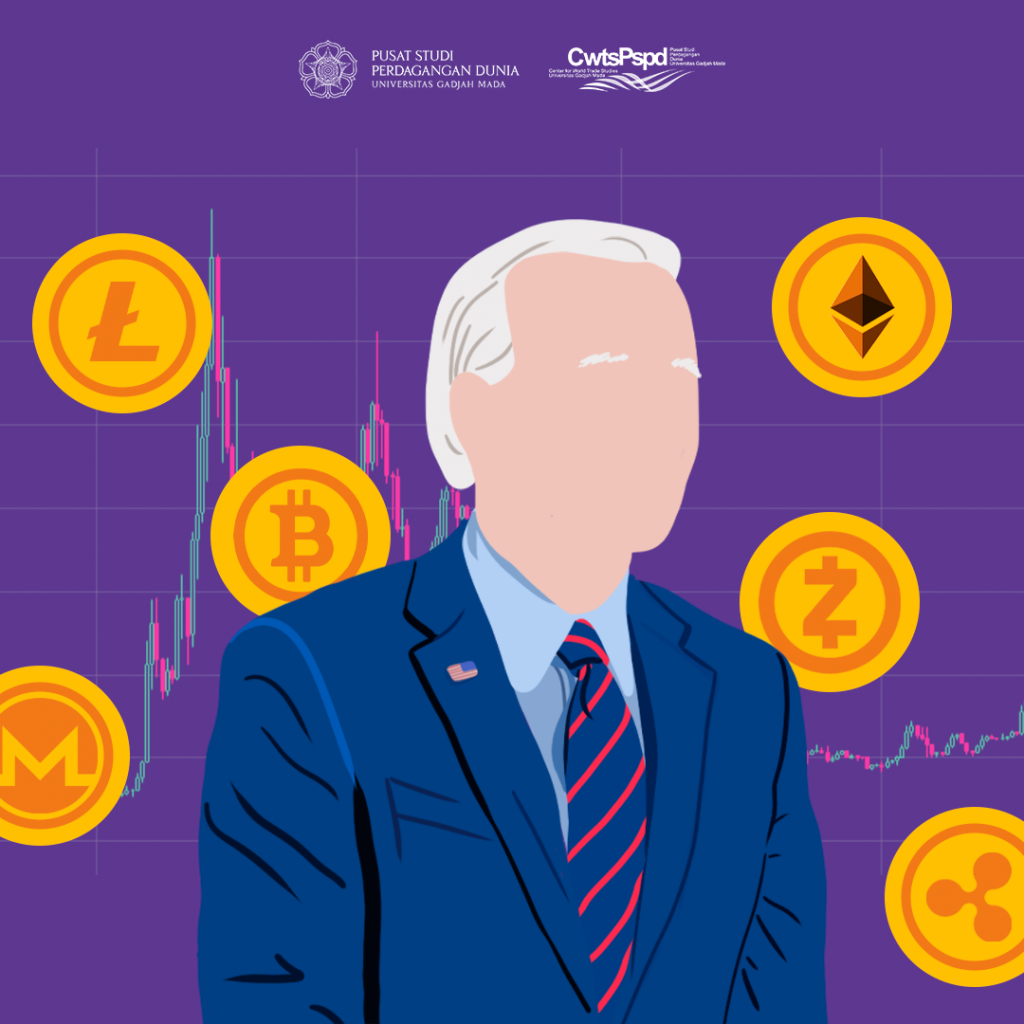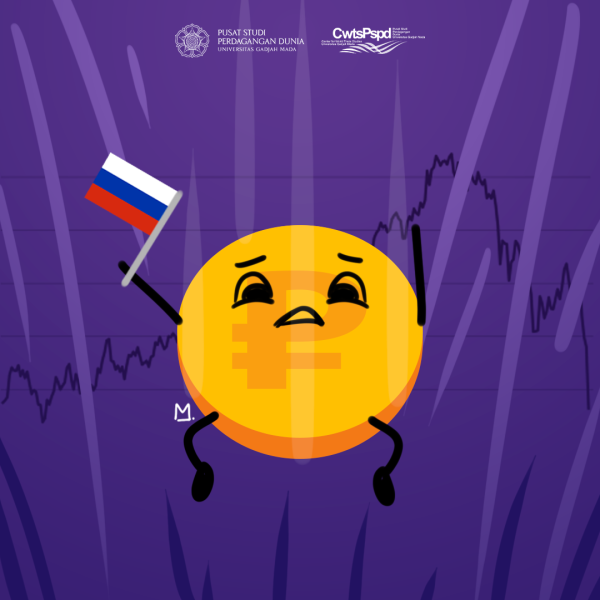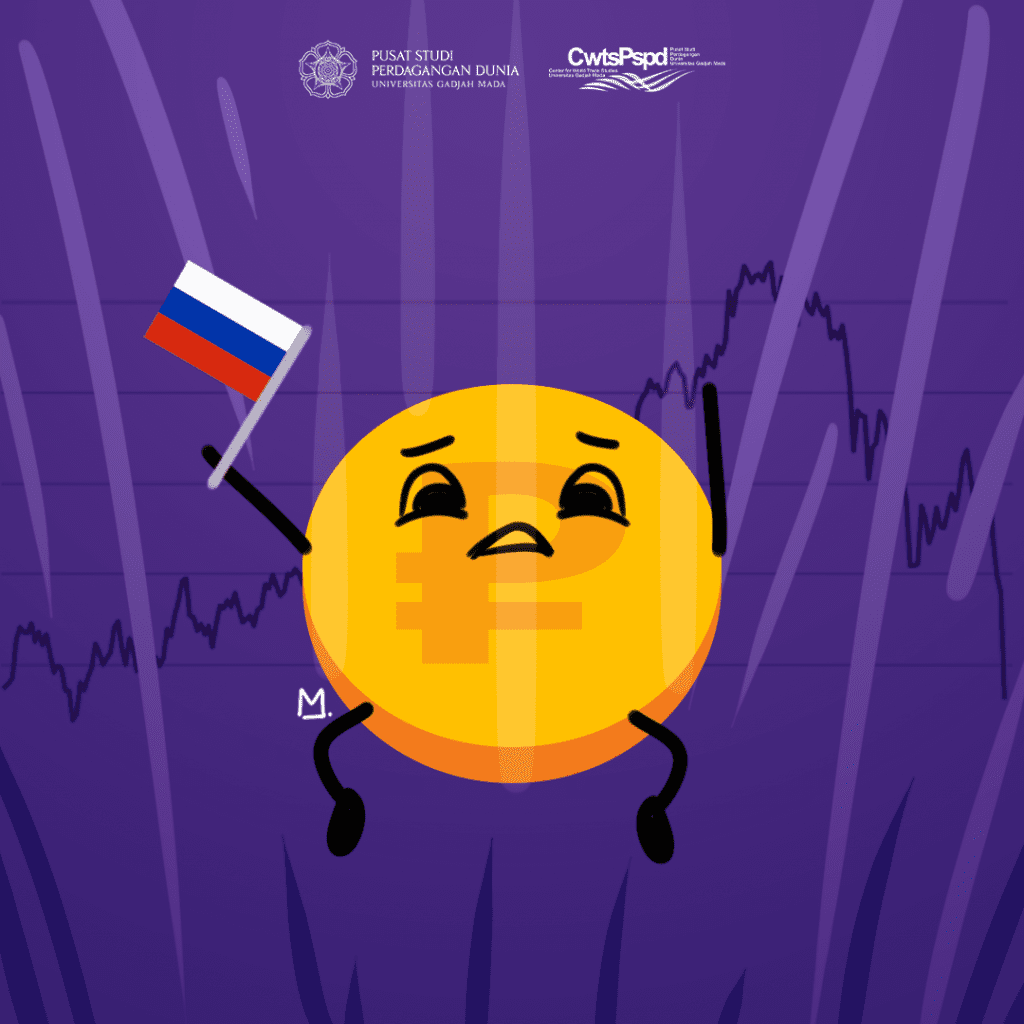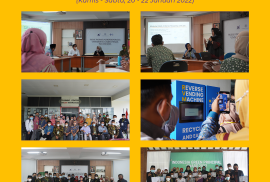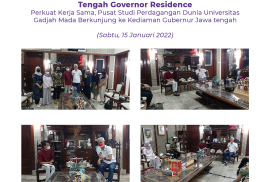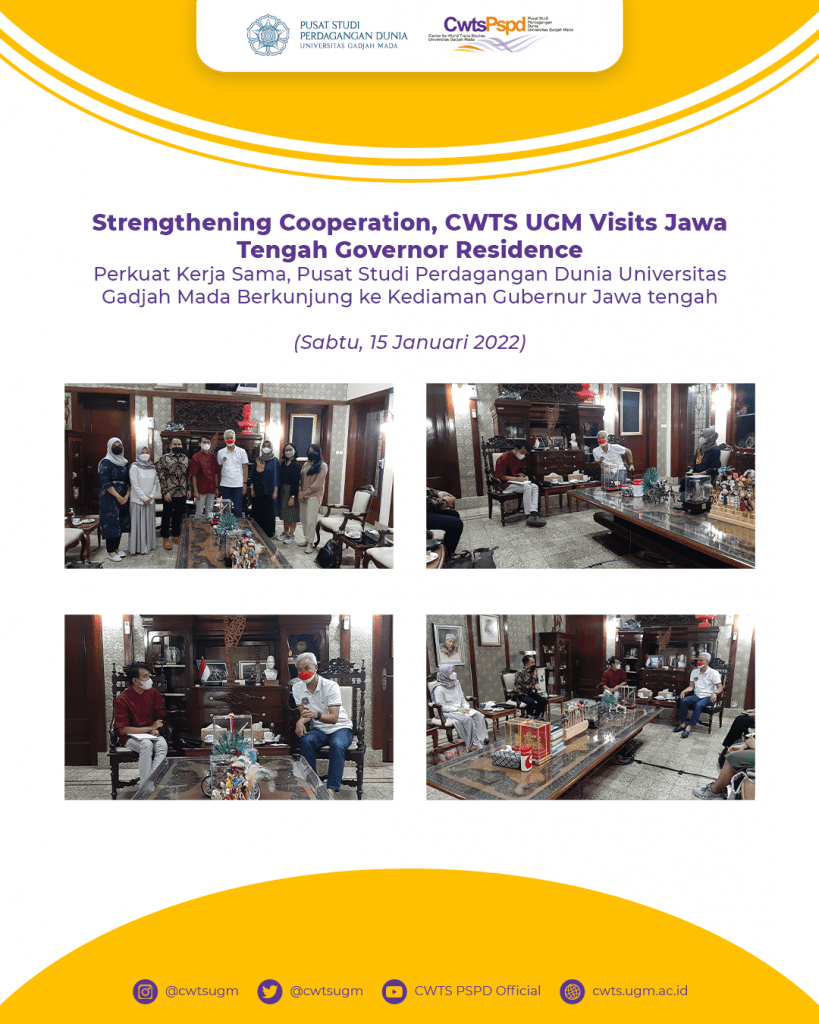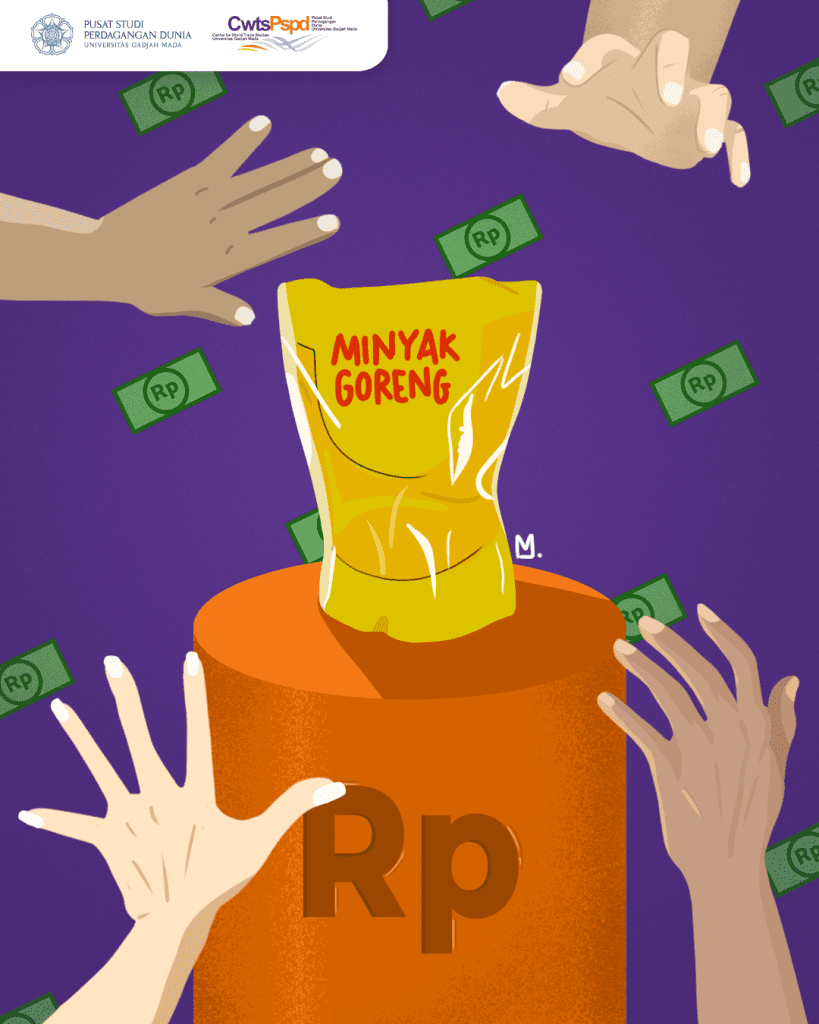European Union-Russia Energy Dependency in the Midst of Russian-Ukraine Conflict
Uncategorized Sunday, 20 March 2022
Illustrated By Marsha

Writen By:
Lukas Andri Surya Singarimbun
Writer, Pusat Studi Perdagangan Dunia Universitas Gadjah Mada.

Editor:
Nabila Asysyfa Nur
Website Content Manager, Center for World Trade Studies Universitas Gadjah Mada.

Illustrated By:
Marsha
Marsha, Graphic Designer, Center for World Trade Studies Universitas Gadjah Mada.
The Russian-Ukraine conflict has reached a new phase in recent weeks. Russian President, Vladimir Putin, has deployed the military personnel into Ukraine’s territory in order to implement what is being called a “demilitarization” and “liberalization” action for some of the Ukrainians. Instead of gaining military support from NATO (North Atlantic Treaty Organization), Ukraine President, Volodymir Zelensky, questioned the commitment of NATO members and also the US to support Ukraine to defend its territory, especially militarily. Hence, it is interesting to examine the unwillingness of NATO and the US to support Ukraine to defend its territory militarily and choose to utilize economic sanctions such as banning Russia’s access to SWIFT (Society for Worldwide Interbank Financial Telecommunication) and freezing Russia’s central bank assets.
Aside from the humanitarian, geostrategic, and security issues that are debated in this conflict, the energy trade relationship, particularly the gas trade relationship, between Russia and European Union countries cannot be overlooked from the discussion of the Russia-Ukraine conflict considering the majority of European Union members are NATO (North Atlantic Treaty Organization) members which rely on Russian gas supplies.
The dependency of European countries, particularly those who are members of NATO and the European Union, on Russia’s gas supply is quite large which accounts up to one-third of the security pact members' consumption. According to the data, Germany, considered one of the powerful states in NATO, depends more than its 50% national gas supply from Russia (Wilkes et al., 2022). Besides Germany, France and Italy also rely on Russian gas supplies to import 25% and 45% of their total national gas consumption. Furthermore, countries such as Bulgaria, the Czech Republic, Estonia, Hungary, Poland, and Slovakia import 75% to 100% of their gas supply from Russia.
The topic of energy security, notably gas supplies from Russia to several NATO members, becomes significant in addressing both sides' relationships. Unlike petroleum resources, the cost of transporting gas by tanker is high. As a result, supplying through pipelines is more efficient and less expensive. Therefore, changes in the selling prices to the cessation of natural gas supply by the primary gas supplier, Rusia, will cause distress to the consumers such as countries in Western Europe to switch to other energy sources. According to Cohen and Reed, the dependency on Russian gas become one of the main challenges for NATO to impose severe sanctions on Russia (Cohen & Reed, 2022). The supply of natural gas that continues to flow to NATO nations, when the Russian army entered Ukraine, may lessen the impact of the US-led economic retaliation to stop President Putin from aggression against Ukraine. On the other hand, NATO members must guarantee that decreasing or even canceling Russia's gas supply does not have a worse impact on European Union countries.
The crisis between Russia and Ukraine demonstrates another key aspect of comprehending international relations. Instead of strengthening relations between the two parties, European Union and Russia, in accordance with dependency theory which argues that economic interdependence can reduce mutual distrust, the parties' reliance on energy supplies does not appear to be improving their relationship. Krickovic further contends that, in addition to perpetuating the region's security challenge, the energy trade might be used as a weapon to acquire each party's benefit (Krickovic, 2015).
Understanding the relationship of both parties, energy trade becomes political leverage to gain their interest. The European Union's dependency on energy from Ukraine becomes one of the most influential aspects in determining the security policy and response to Russia’s attack on Ukraine territory. On the other side, Russia is also depending on the income from exporting gas to European Union states. More than 70% of its gas export is transferred through the gas pipelines to European countries. Therefore, although these parties' energy trading connection is arguably advantageous economically, the reliance of certain NATO members on energy provides Russia with greater political leverage to exert its interest in the region vis-à-vis NATO.
According to Baran, the amount of energy dependence on Russia causes some of the NATO member's foreign policy to be not independent because it provides a large portion of the calculation of energy dependence on Russia (Baran, 2007). On several occasions, Moscow frequently utilizes the energy leverage as its political leverage, particularly to compel its neighboring countries to act in Russia's best interests. If its neighboring nations fail to meet Russia's interests, Russia will utilize numerous arguments connected to energy supply failure to halt energy flow to the neighboring countries and also sometimes seem manipulative as it did to the Balkan countries. Arguably, it is worrying for some NATO countries to act harshly over the Ukraine attack.
In response to Russia's military war on Ukraine, Germany has halted the critical Nord Stream 2 pipeline project, which was officially announced by Germany's Chancellor, Olaf Scholz (Eddy, 2022). Nord Stream 2 project was approved by the German government in 2018 and is scheduled to be operated in early 2022. According to many observers, the realization of this project would undoubtedly enhance not just the countries’ reliance on Russian gas supplies, but may also fracture political unity in responding to Russian aggression. For Germany, halting the implementation project is also perceived as a daring decision for a nation that depends almost on its half of energy supply from Russia.
However, some observers argue that the termination of the Nord Stream 2 project is inadequate to stop the Russian attack on Ukraine. Despite imposing economic penalties on various aspects, such as excluding Russia from SWIFT and international trade, NATO countries' reliance on Russian energy supplies compels them not to restrict Russia in the energy sector, which is one of the sectors that might harm Russia's economy more severely. It will be too risky for sanctioning Russia in the energy sector which might imperil the European energy supply and security. Therefore, in the context of developing conflict in Ukraine, it is not impossible for President Putin to exercise its energy leverage to achieve his interest and counter the sanctions made by the West on Russia's economy, even though this strategy has not been used.
Seeing some of NATO members' energy vulnerability towards Russia, it is arguably the utmost interest of these nations to reduce the energy supply dependency from Russia. Besides seeking other parties, these nations might accelerate renewable energy to fulfill the energy demand in the foreseeable future. This is expected to provide a wider space for NATO countries in carrying out their foreign policy. The development of renewable energy in European Union and NATO members have accelerated incrementally over the past decades yet still unable to fulfill the energy demand in the region.
In sum, it is crucial for the NATO members to diversify their energy suppliers and accelerate the alternative energy resources to reduce the dependence on Russian energy. According to Krickovic, diversifying the energy resources and suppliers might benefit NATO members to shape its foreign policy and strategy more independently vis-à-vis Russia's aggression in Ukraine. However, as NATO Secretary-General Jens Stoltenberg stated, the transition to renewable energy will take some time and propels the countries to increase the fund for accelerating the transition to renewable energy but it should be done immediately (Maclellan & Rodionov, 2022).
References
Baran, Z. (2007). EU Energy Security: Time to End Russian Leverage. The Washington Quarterly, 30, 131–144. https://doi.org/10.1162/wash.2007.30.4.131
Cohen, P., & Reed, S. (2022, February 25). Why the Toughest Sanctions on Russia Are the Hardest for Europe to Wield. The New York Times. https://www.nytimes.com/2022/02/25/business/economy/russia-europe-sanctions-gas-oil.html
Eddy, M. (2022, February 22). Germany Responds to Russia, Halting Nord Stream 2 Pipeline. The New York Times. https://www.nytimes.com/2022/02/22/business/nord-stream-russia-putin-germany.html
Krickovic, A. (2015). When Interdependence Produces Conflict: EU–Russia Energy Relations as a Security Dilemma. Contemporary Security Policy, 36(1), 3–26. https://doi.org/10.1080/13523260.2015.1012350
Maclellan, K., & Rodionov, M. (2022, January 30). NATO concerned over Europe’s energy security amid standoff with Russia. Reuters. https://www.reuters.com/world/nato-calls-europe-diversify-energy-supply-amid-standoff-with-russia-2022-01-30/
Wilkes, W., Dezem, V., & Delfs, A. (2022, March 5). Germany Faces Reckoning for Relying on Russia’s Cheap Energy. Bloomberg.Com. https://www.bloomberg.com/news/articles/2022-03-05/germany-faces-reckoning-for-relying-on-putin-for-cheap-energy






